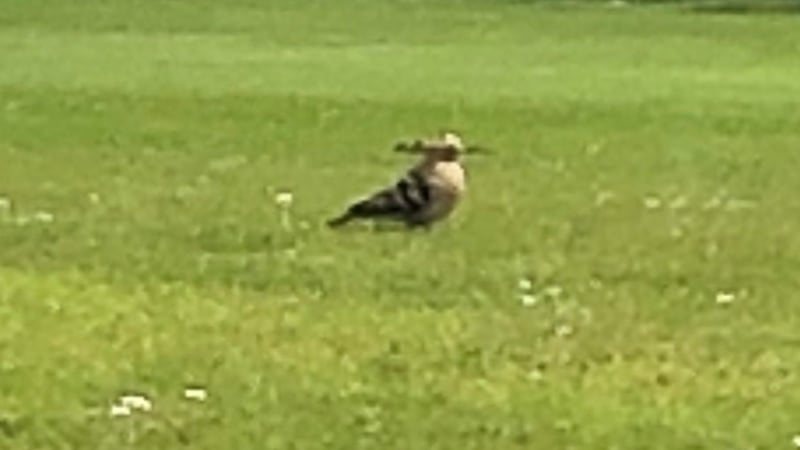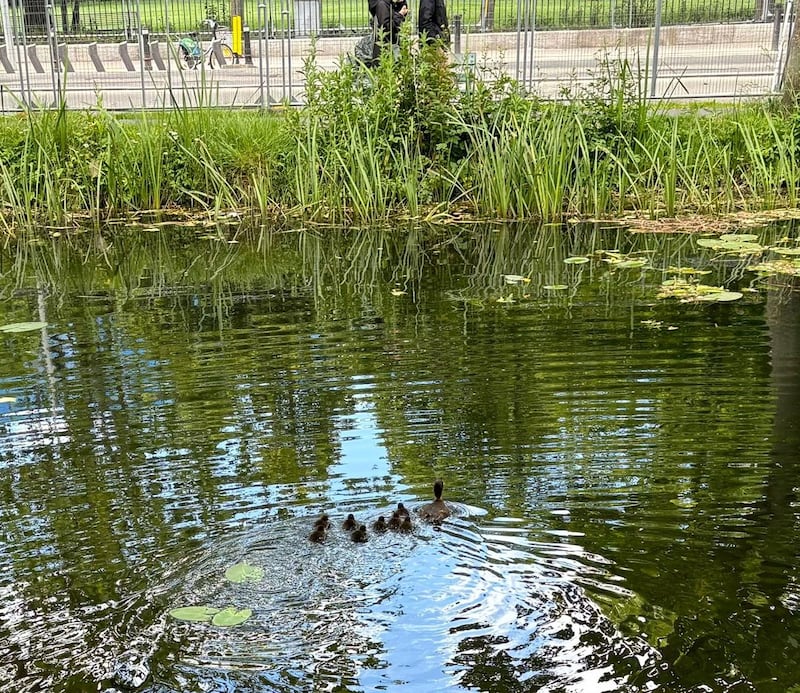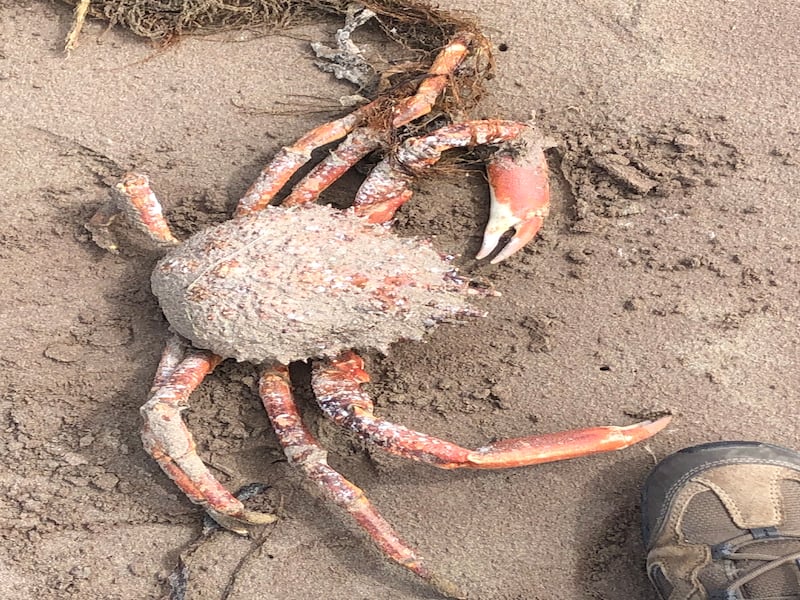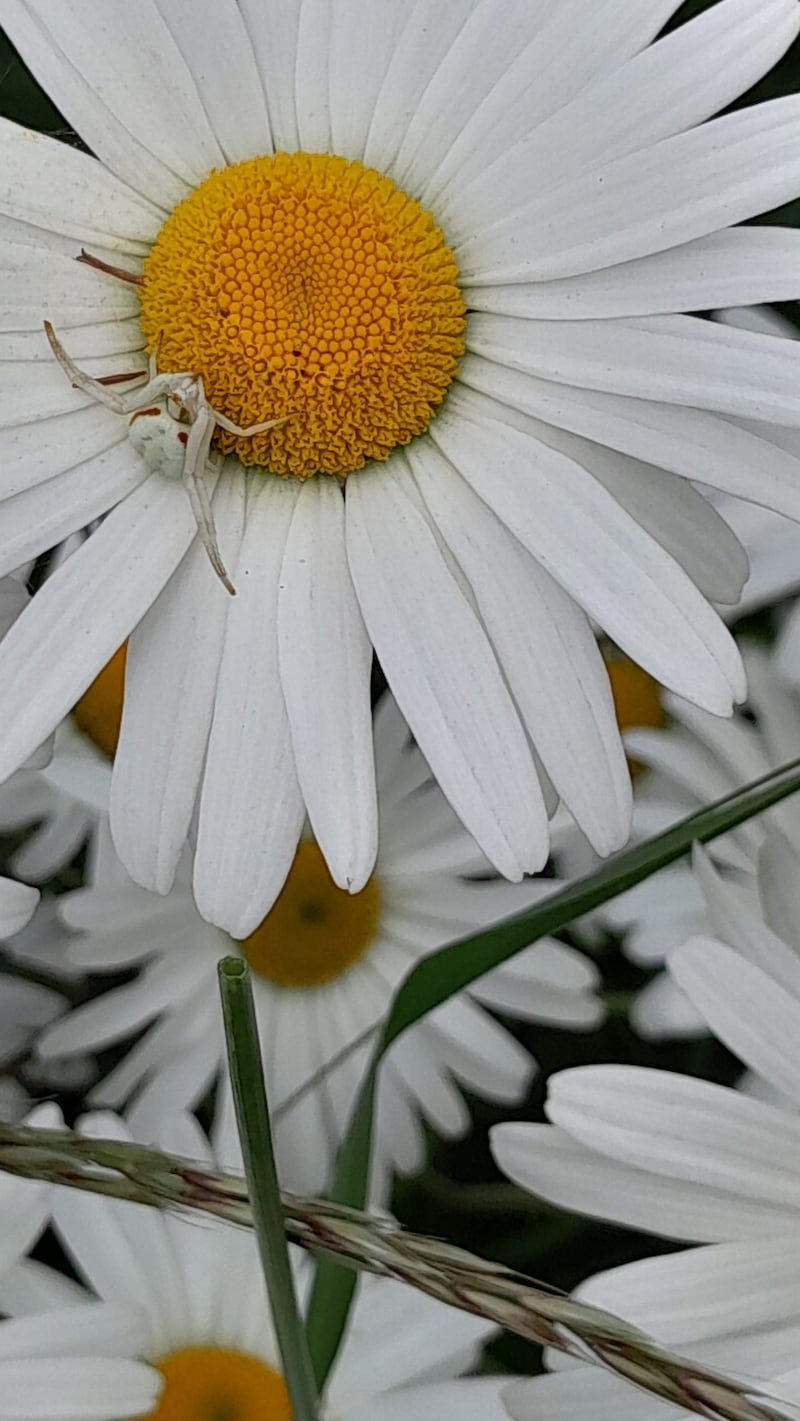I found this in the greenhouse under a pot. Can you tell me about it please? – D Hatton, Co Wexford
This bloodthirsty-looking spider is a woodlouse. It is slow-moving, nocturnal and preys entirely on woodlice, which it can easily spear with its huge fangs. Instead of spinning webs to capture the prey, it hunts at night by searching warm, damp places for roaming woodlice, capturing them in its forward-facing jaws. The fangs can also pierce human skin and inflict a painful bite if we inadvisedly handle the spider – so leave it alone. It hides away during the day, resting in a special hiding place that it lines with silk; a leaba síoda, I suppose.

I just saw a hoopoe on the playing fields of St Columba’s College, Kilmashogue Lane, Dublin. I believe they are rarely sighted; the only time I’ve ever seen one was in The Lion King. – Liam Canning
Well done you for noticing that this is indeed a hoopoe. These birds are unmistakable with their oink-brown plumage and a large head crest like a Mohican hairstyle, which they can erect at will. Hoopoes overwinter in sub-Saharan Africa, which was why it featured in the Disney film, and in the spring they fly north to breed in Europe. Six others turned up here earlier in the year, having overshot their French breeding grounds. They have never been recorded breeding in Ireland.
READ MORE

Through a gap in the barricades along Dublin’s Grand Canal I saw a mother duck taking eight ducklings for a swim. Is this a particularly large brood? – Teddy Morrissey, Dublin
Mallards can lay up to 16 eggs, which are hatched out by the duck entirely on her own after a 28-day incubation period – the male having abandoned her after mating. This lengthy period in the egg means the ducklings have feathers and can swim as soon as they emerge. They follow their mother about on the water, finding seeds and leaves of water plants, which is what they feed on. The few survivors that are not picked off by foxes, rats or herons can fly after about six weeks.

This is one of the largest of thousands of crabs found washed up on Fermoyle beach in north Dingle one morning recently. What has happened? – James Armstrong, Enniskillen, Co Fermanagh
Storms or continuous strong onshore winds can cause mass strandings of bottom-dwelling sea creatures. In this case, this has happened to the great colonies of spider crabs that live on the sea bottom on the northern side of the Dingle Peninsula, close to the Maharees, home of the country’s main spider crab fishery. The females come close to the shoreline to release their eggs at this time and the recent continuous northerly winds dumped them all up on the shore, where they dried out and died. Hopefully they got their eggs deposited safely beforehand.

Here is a picture of a crab spider on an oxeye daisy. – Paul Murphy, Co Limerick
This is a female crab spider, so-called because its squat, dumpy appearance gives it a crab-like appearance. The first two pairs of legs are longer than the back two and are turned forward, which gives it the ability to walk sideways. This one – Misumena vatia – can change its colour, varying from white to yellow and occasionally even green to match that of the flower head, where it sits waiting to ambush visiting insects. When an insect arrives and seeks nectar, the spider sticks its fangs into its head, releases its venom and paralyses it instantly. No wonder one of its English names is white death.
Please submit your nature query, observation, or photo, with a location, via irishtimes.com/eyeonnature




















